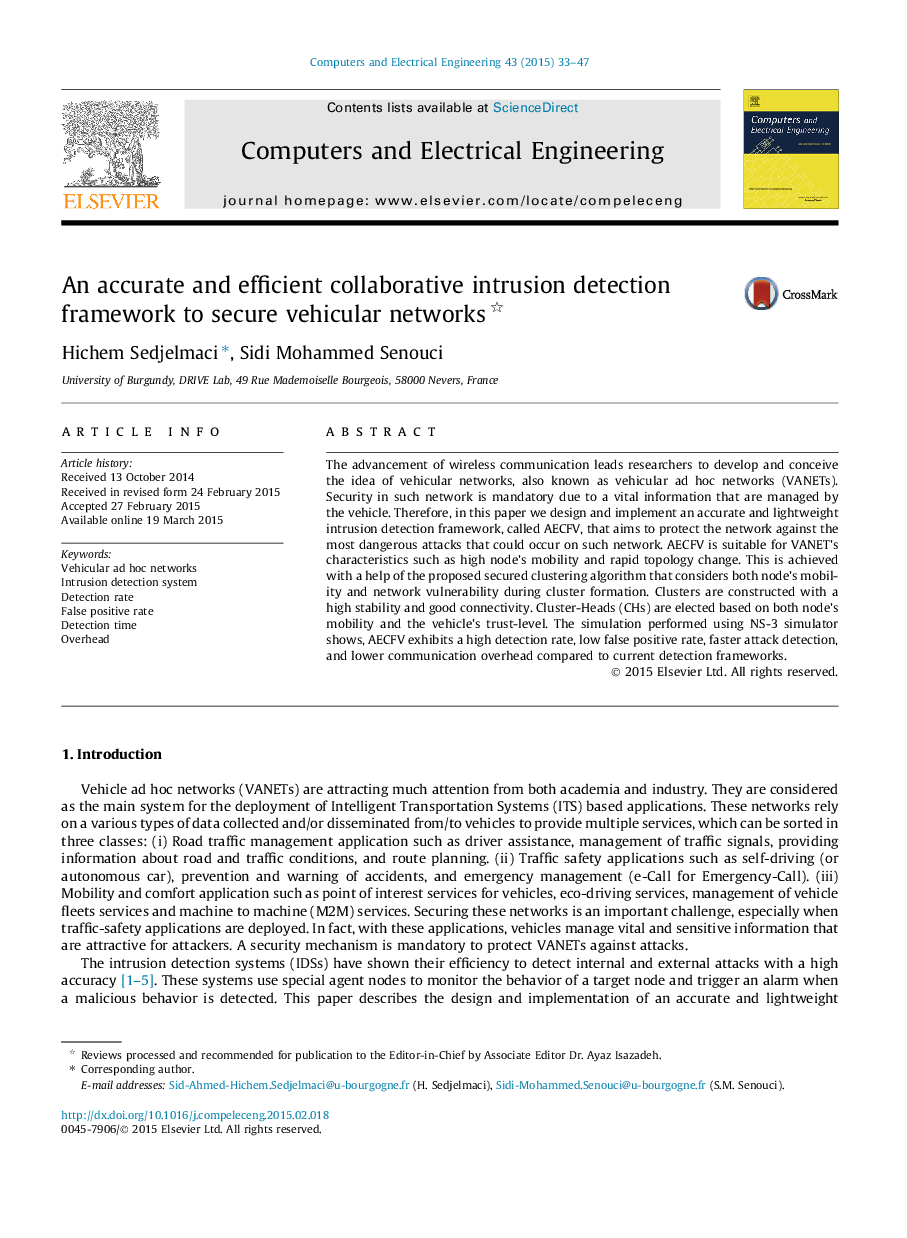| Article ID | Journal | Published Year | Pages | File Type |
|---|---|---|---|---|
| 453974 | Computers & Electrical Engineering | 2015 | 15 Pages |
•We design and implement an accurate and lightweight intrusion detection framework, called AECFV.•AECFV aims to protect the vehicular ad hoc networks (VANETs) against the most dangerous attacks that could occurred on this network.•AECFV take into account the VANET's characteristics such as high node's mobility and rapid topology change.•AECFV exhibits a high detection rate, low false positive rate, faster attack detection, and lower communication overhead.
The advancement of wireless communication leads researchers to develop and conceive the idea of vehicular networks, also known as vehicular ad hoc networks (VANETs). Security in such network is mandatory due to a vital information that are managed by the vehicle. Therefore, in this paper we design and implement an accurate and lightweight intrusion detection framework, called AECFV, that aims to protect the network against the most dangerous attacks that could occur on such network. AECFV is suitable for VANET’s characteristics such as high node’s mobility and rapid topology change. This is achieved with a help of the proposed secured clustering algorithm that considers both node’s mobility and network vulnerability during cluster formation. Clusters are constructed with a high stability and good connectivity. Cluster-Heads (CHs) are elected based on both node’s mobility and the vehicle’s trust-level. The simulation performed using NS-3 simulator shows, AECFV exhibits a high detection rate, low false positive rate, faster attack detection, and lower communication overhead compared to current detection frameworks.
Graphical abstractFigure optionsDownload full-size imageDownload as PowerPoint slide
